
Telenor ASA is a Norwegian majority state-owned multinational telecommunications company headquartered at Fornebu in Bærum, close to Oslo. It is one of the world's largest mobile telecommunications companies with operations worldwide, but focused in Scandinavia and Asia. It has extensive broadband and TV distribution operations in four Nordic countries, and a 10-year-old research and business line for machine-to-machine technology. Telenor owns networks in 8 countries.

Bærum is a municipality in the Greater Oslo Region in Akershus County, Norway. It forms an affluent suburb of Oslo on the west coast of the city. Bærum is Norway's fifth largest municipality with a population of 128,760 (2021). The administrative centre of the municipality is the town of Sandvika. Bærum was established as a municipality on 1 January 1838.

The Norwegian Institute of Technology was a science institute in Trondheim, Norway. It was established in 1910, and existed as an independent technical university for 58 years, after which it was merged into the University of Trondheim as an independent college.

Uninett AS is a state-owned company responsible for Norway's National Research and Education Network. The organization develops and operates the national research network in Norway. The center of operations in located at Teknobyen Innovation Centre in Trondheim. Uninett has approximately 100 employees. All Norwegian universities and most of the public colleges are connected to Uninett. Any non-commercial research or educational institution such as libraries, archives and schools may be connected for a yearly fee. The CEO of Uninett is Tom Røtting.
SINTEF, headquartered in Trondheim, Norway, is an independent research organization founded in 1950 that conducts contract research and development projects. SINTEF has 2000 employees from 75 countries and annual revenues of three billion Norwegian kroner. SINTEF has a close partnership with Norwegian University of Science and Technology (NTNU), started in 1950 when SINTEF was founded. SINTEF has expertise in technology, medicine and the social sciences. Alexandra Bech Gjørv is the CEO of SINTEF, preceded by Unni Steinsmo, Morten Loktu and Roar Arntzen.
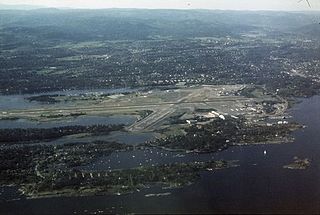
Oslo Airport, Fornebu(IATA: FBU, ICAO: ENFB) was the primary international airport serving Oslo and Eastern Norway from 1 June 1939 to 7 October 1998. It was then replaced by Oslo Airport, Gardermoen, and the area has since been redeveloped. The airport was located at Fornebu in Bærum, 8 km (5.0 mi) from the city center. Fornebu had two runways, one 2,370 m (7,780 ft) 06/24 and one 1,800 m (5,900 ft) 01/19, and a capacity of 20 aircraft. In 1996, the airport had 170,823 aircraft movements and 10,072,054 passengers. The airport served as a hub for Scandinavian Airlines System (SAS), Braathens SAFE and Widerøe. In 1996, they and 21 other airlines served 28 international destinations. Due to limited terminal and runway capacity, intercontinental and charter airlines used Gardermoen. The Royal Norwegian Air Force retained offices at Fornebu.
Simula Research Laboratory is a Norwegian non-profit research organisation located in Oslo, Norway.

Unity Arena, previously known as Telenor Arena and Fornebu Arena, is a multi-purpose indoor arena located at Fornebu in Bærum, outside Oslo, Norway. It serves as a venue for a variety of events, including concerts, exhibitions, action shows, family shows, TV and sport. It has a capacity for 15,000 spectators for sports and 25,000 for concerts, including 40 luxury boxes and club seating for 1,200. The venue has a fixed roof and an asphalt floor. The venue was opened ahead of the 2009 Norwegian football season as a replacement for Nadderud Stadion. It cost 585 million Norwegian kroner (NOK) to build, of which NOK 300 million was for the sports venue. The arena will host the 2025 World Men's Handball Championship with the country, Croatia and Denmark including the final.
Det Norske Luftfartselskap A/S or DNL, trading internationally as Norwegian Air Lines, was an airline and flag carrier of Norway. Founded in 1927, it operated domestic and international routes from 1935 to 1941 and from 1946 to 1951. It became one of the three founders of Scandinavian Airlines System (SAS) and became one of its three holding companies from 1951, with a 28% stake and listed on the Oslo Stock Exchange. DNL was renamed SAS Norge ASA in 1996 and was merged in 2001 to create the SAS Group.
The Royal Norwegian Ministry of Trade and Industry was a Norwegian ministry responsible for business, trade and industry.

ErgoGroup was a Nordic information technology corporation, systems integrator and consulting company headquartered in Oslo, Norway. The company provided services for IT operations, business solutions, outsourcing, infrastructure and consulting. ErgoGroup had a total of 90 offices and regional branches throughout Norway, Sweden and Finland, and was a subsidiary of Posten Norge, the Norwegian Postal Service. It was the second largest ICT operations company in Norway. The company also held partial ownership in SYSteam, TransWare, Gecko, Eiendomsverdi, Buypass, Eye-Share and Bekk Consulting. ErgoGroup merged with EDB Business Partner in 2010, creating EVRY.
Thorleif Enger is a Norwegian businessperson and was Chief Executive Officer of Yara International. Enger was educated at the University of Colorado where he earned his PhD in Structural Engineering. He worked for Royal Dutch Shell until 1973, after which he moved to Norway to work for Norsk Hydro. He was director of the Oseberg oil field 1982–86, and from then until 1996 was president of the exploration and production division. He was then executive vice president of Hydro Oil and Gas until 1999, when he became executive vice president of Hydro Agri, and when this division was demerged to create Yara in 2004 he became its CEO. He announced his retirement in September 2008. Enger has been president of the International Fertilizer Industry Association, and has been a chairman or non-executive director of several boards, including Telenor, Spring Energy, HitecVision, and Marine Harvest. In 2010, Kapital named him one of the top ten business leaders in Norway after World War II.
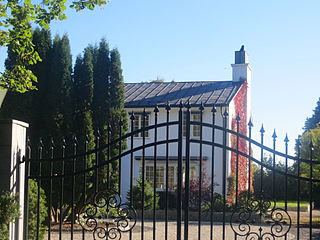
Niels Roth Heyerdahl Werring was a Norwegian ship-owner. He was the senior director the shipping company Wilh. Wilhelmsen Holding ASA.
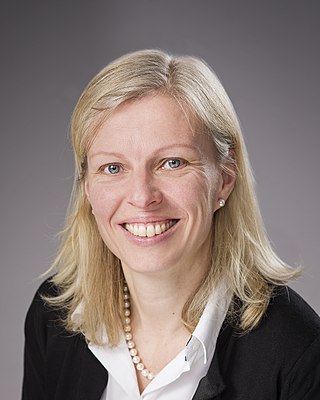
Gunvor Ulstein is a Norwegian businesswoman, CEO of Ulstein Group, Head of the Board at Ulsmo and a number of companies in Ulstein Group, and Deputy Chair of the Board in Ulstein Group. She is a member of the Board in Hafast, an association engaged in mainland connection from Hareid to Ålesund via Sula, a board member of SOS Children's Villages and the ÅKP-IMD Advisory Board.

Det Norske Veritas (DNV), formerly DNV GL is an international accredited registrar and classification society headquartered in Høvik, Norway. DNV provides services for several industries, including maritime, oil and gas, renewable energy, electrification, and healthcare.

Vizada was a Norwegian firm and later subsidiary brand of EADS and Marlink providing satellite communications services. It operated stations that connected satellite communications to terrestrial telecommunications and IP networks. Vizada's services covered maritime, land, and aeronautical services. In 2011, the Vizada Group was acquired by EADS and integrated as a subsidiary of Astrium.
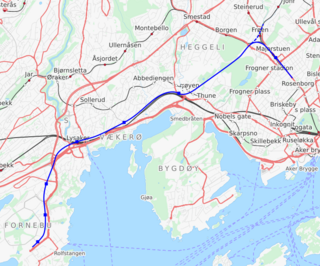
The Fornebu Line is an under construction rail line which will serve the peninsula of Fornebu in Bærum, Norway. The line is under construction and the transit agency Ruter is working towards connecting it to the Oslo Metro. The line has at various stages been proposed as an automated people mover, tram-train, tramway, light rail, stadtbahn, rapid transit, bus rapid transit and commuter rail, with the rapid transit option being selected as the final proposal. The metro line will start at Majorstuen Station and will run entirely in a tunnel for 8,150 meters (26,740 ft). The line will have six stations, at Skøyen, Vækerø, Lysaker, Telenor Arena, Flytårnet and Fornebu Senter. A depot will be built at Fornebu and the line will connect to the metro's Common Tunnel at Majorstuen.
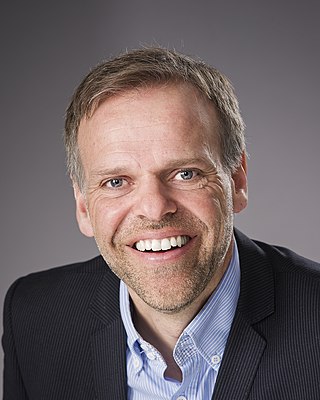
Tore Ulstein is Chair of the Board in Ulstein Group and member of the board in several of the companies in Ulstein Group, and in Ulsmo, Head of the Board at SINTEF and member of the Board at GC Rieber AS. Tore Ulstein is the son of Ulstein Group's previous CEO, Idar Ulstein (1934–2012).
The Rosing Prizes are awarded to people who have made contributions to the Norwegian IT community, it is the Norwegian Computer Society that organizes the award ceremony. The Norwegian Computer Society was established in 1953 in Oslo and has over 8500 members, making it one of the oldest computer societies in Europe. It is also a member of the International Federation for Information Processing, the Council of European Professional Informatics Societies (CEPSIS) and the Nordic Data Union (NDU).














